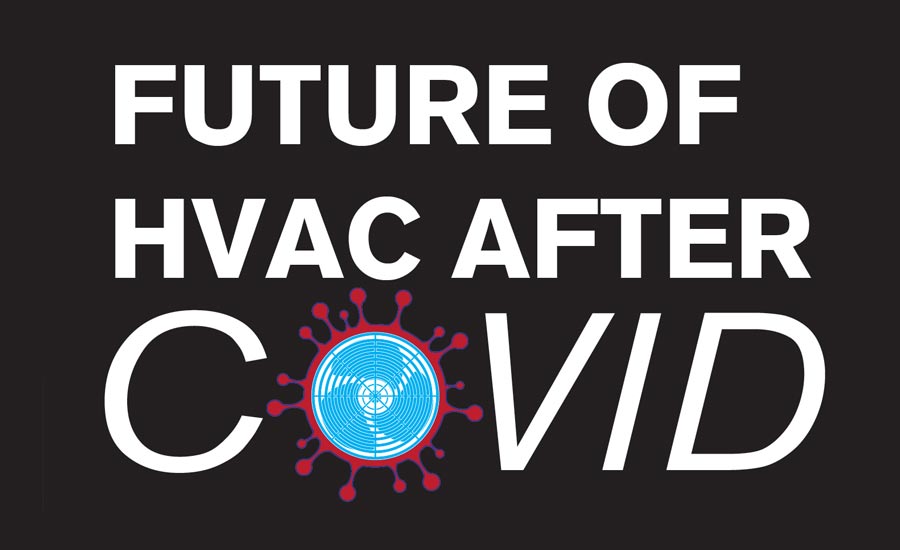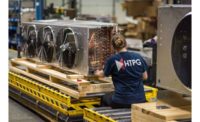
This is the second in a four-part series about what lies in store for the HVAC industry in a post-COVID world.
One year after COVID-19 started to warp the contours of business and life in general, how are the aftereffects looking for HVAC distributors? What did they learn, and what “in the moment” adjustments will contribute to the shape of things to come?
Several distributors shared insights and opinions in recent weeks as they participated in discussions including a recent HARDI webinar sponsored by ProKeep, the Distribution Trends roundtable Q&A, and the Distribution Trends annual survey. Their comments cover ground ranging from which market sectors are on the rebound to the unexpected upsides of COVID-era cleaning habits.
The Dirt On Cleanliness
“We really like the cleaning,” said John White, president at American Refrigeration Supplies, an Arizona-based distributor with over 30 locations across six states, White talked in the HARDI webinar about unexpected byproducts of COVID-driven changes in procedure.
“We really like the cleaning. It’s not only helped sanitize our branches, but it’s made them cleaner/more organized. Less dust. It looks better for customers. Customers enjoy coming into our stores. People are getting less sick, fewer colds and things.”
White expects some of the little sanitation-related changes his company made to stick around.
Seth Gordon is president of Thrifty Supply, a third-generation distributor serving five states in the northwest. Gordon added that his team has upped its game behind the scenes in this area with a step that could pay dividends for distributors not only in terms of health but in the event of any liability-related questions.
“Rather than just using spreadsheets and emails to track all of that in all of our locations,” he said, “we use a digital platform that allowed us to make sure every day that we’re doing our disinfecting. We had that log so that if there was any case or some issue at our branch from a COVID perspective, we could go back to make sure that we were doing the cleanings.”
(As of this writing, Thrifty’s homepage reflects modern HVAC distribution quite well. Top of page highlights: PPP equipment, water heaters, and the company’s YouTube channel.)
Speaking of PPP equipment, Matthew Bedard took a moment in the Distribution Trends survey (where his company, S.G. Torrice, placed #29) to caution against moving on from pandemic-related measures too fast.
“End users have come to trust HVAC contractors to complete jobs in a safe manner,” he said, “and PPE is here to stay for the foreseeable future.”
HVAC Inventory Gets Intense
Beyond maintaining essential health and keeping the doors open, distributors and contractors alike know that the biggest recent challenge has been getting the right equipment in time.
At cfm Distributors in Kansas City, president/CEO Lauren Roberts credits strong inventory planning by her team as a key to avoiding the worst of it. She mentioned one other tactic that wasn’t new but paid off more than ever.
“As we have in past years, we were reminded of the importance of adding some additional temporary warehouse space to allow us to flex up in inventory for the busy season without a long-term lease commitment.”
Like many in the industry, American Refrigeration Supply’s White observes that inventory challenges and backlogs have not disappeared and have demanded adjustments.
“This was a big paradigm [shift] that we've been facing, because while we did seasonal orders like a lot of other distributors and larger orders periodically, [now] we try to order everything every week. At least we try to place an order every week in the pipeline.
“And that's been very difficult,” he continued, “to place smaller orders more frequently in a world where the supply chain is struggling to keep up with that.”
Loran Liu, chief operating officer of Standard Supply in Dallas, reported that his company tackled the issue in what might be the most straightforward way for those who have the capability. Given the lead time delays that Standard Supply found itself facing, the company increased its inventory by 25%.
Some distributors concluded that reaching out was as important as stocking up.
“Be proactive!” Liu said in Distribution Trends Roundtable comments. His company noticed that improperly filled orders were often intertwined with longer lead times, which were the result of some issue with a manufacturing partner that the partner did not share in advance.
“We started taking the initiative to reach out to our key vendors on a consistent basis,” Liu explained, “and to ask them to share with us their struggles and what they were forecasting and predicting.”
Initiating those conversations works in the other direction, too. It can not only avoid problems but help to position a distributor as a valued resource.
“Getting more connected with our customers in terms of their demand planning” is another area where ARS’ White thinks COVID survival tactics will stick around.
“So you get some larger equipment dealers and you’re starting to have conversations with them, providing data to them about what they did last year,” he explained. More proactive conversations about what customers will need can, in turn, deliver internal benefits in terms of better coordinated fulfillment strategies.
Whether talking with dealers or vendors, “We are only as good as the information gathered from all areas of the industry,” said Dan Benischek, vice president of operational excellence for Gustave A. Larson. The Pewaukee, Wisconsin, company and stalwart Distribution Trends survey Top 10 finisher serves residential and commercial customers in 22 states.
Benischek saw expanding on “old school” relationships in this way as providing innovative solutions and “very tangible results” in a difficult time.
Distributors Need to Always Be Adjusting
Another factor that is becoming increasingly tangible? The desire to (finally) get out of the house — and maybe even the zip code — for a while.
In the Distribution Trends survey, New Jersey’s Total Home Supply president Mike Luongo noted a “major uptick” in PTAC and VTAC unit sales. That seems likely to continue as much of the country finally addresses the pent-up demand for more traditional getaways.
In a period where many contractors reshuffled and redistributed their buying habits at least a little, Luongo added that his company decided to “add more accessories and add-on products to make it easier for our customers to get everything they need to complete their projects.”
Or sometimes, it may be a case of addressing not what they customer ordered but what they meant to order. White’s team tried its own pandemic-driven twist on this concept in the form of a truck stock program and liked the results.
“Our delivery drivers now just have a box of stuff that they can sell on the fly because it’s stuff [the contractor] forgot to order when they were placing it.”
A distributor submitting anonymous survey comments went further in changing up inventory.
“In order to evolve with operational technology architectures,” they said, “we have expanded our offerings to include more networking and IP-based products.”
That company has also extended more aggressively into products explicitly connected to COVID-related concerns. These have included health-risk survey and screening products, infrared skin temperature screening systems, and body temperature and mask detection readers with face and palm recognition.
Picking Up and Trying Out
Not every tactic from peak pandemic will stay in the playbook, and some ideas that seem like they should be a hit might not translate. Thrifty Supply had already been experimenting with augmented reality Facetime and video calls. These allow contractors to call the distributor, show them an image, and allow the distributor’s tech to take control of the camera, measure distances, talk through wiring, and so forth.
“We thought that was going to be a huge success. We were glad we had that platform ahead of time,” Seth Gordon said. “It turns out no one’s using it. It’s a great technology, but just not the adoption that we expected.”
White added that ARS tried to run virtual training sessions at the same fairly long length as in-person events, and they hit a wall.
“We couldn’t get people’s attention that long,” he said. “So finding ways to create shorter sound bites, snippets, more right-to-the-point conversations is something we’ve learned to adopt virtually.”
Gordon expects that remote viewership to become standard operating procedure and not just an improvised fix.
“Even though we’re going to have in-person events,” he continued, “we still want to make sure we can reach the folks that don’t want to come into the store or maybe are too far away. They’re now used to that digital approach, and they want to keep doing that from long distance.”
As a result, Gordon said, he and other distributors have invested in higher-quality audiovisual equipment “to make the digital or virtual trainings a lot more seemingly ‘in person’ or as much hands-on as you can get virtually.”
Contractors might resist some technology and assistance while on an actual call but welcome similar tech for scheduled training.
As others on the HARDI/ProKeep webinar did, Gordon does see ordering by text as a keeper. Where Thrifty might have had a couple of customers texting orders previously, now there might be 10 or 20, he said.
Gordon mentioned one distributor he knows who added a hold script to their phone system, basically saying, “Hey, text us. Get out of the queue, get your order in so that you can be serviced.”
Just as texting can better distribute order demand across a distributor’s resources and save time for the customer, White found that after some initial reluctance, curbside pickup also had the benefit of reducing in-store foot traffic at any one time.
Furthermore, the concept of drive-through customers has expanded the field for promoting products. One of his branch managers thought to start hanging merchandise banners inside the rafters of the warehouse.
“So when the truck pulls in to load up,” White said, “they’re seeing all kinds of merchandising running down the warehouse. He had the space to do it and it looks awesome.”
Similarly, White’s team has tried and is expanding use of some screen-printed window signs to advertise some of Thrifty’s bigger brands.
New Muscles, Old Values
Both Gordon and White talked about the intangible value that gets lost from predominantly remote interactions — both in dealing with customers and in day-to-day internal team interactions. Reopening allows distributors to regain some of those opportunities to build trust and rapport.
As the recovery continues, one benefit of the last year for many distributors is more willingness to try new things and adapt through temporary difficulties. Teams have found ways to clear time or resource-related hurdles that once would have seemed too tall, and that confidence has a lasting impact.
In another sense, as White concluded, COVID presented new problems but reinforced the same old objective for distributors.
“It's reminding them why you want to do business with us. Is it the extra mile we go? Is it the ability to work with you on your plan to meet your needs, or is it because we provide really good service when you need something?”
“It's not just buying something,” he said. “It's bringing stuff back, or it's troubleshooting, or it's processing — all those little things.”






Report Abusive Comment